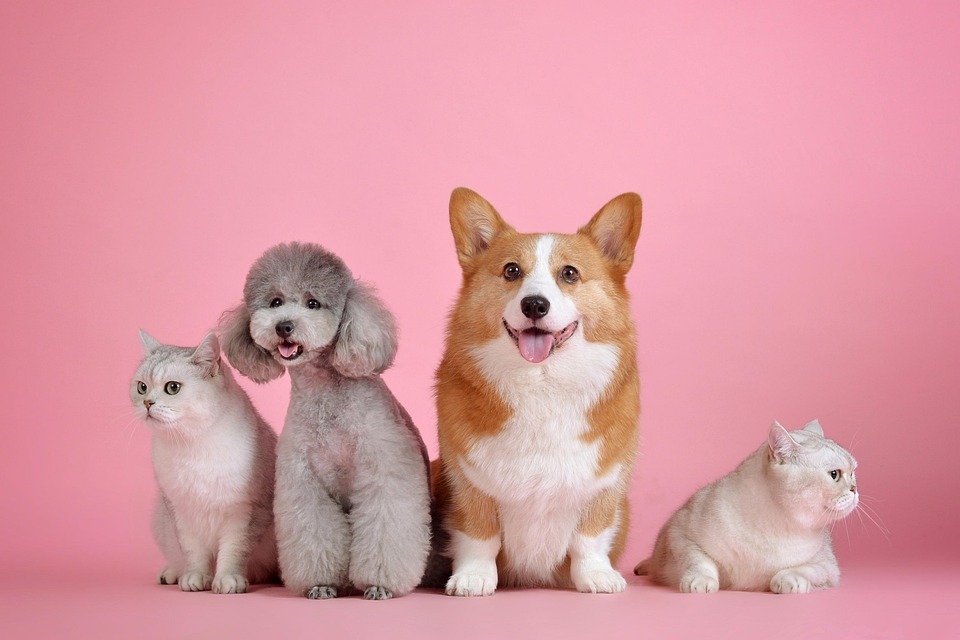In recent years, the trend of feeding pets raw food has gained significant traction. This shift towards raw feeding is driven by pet owners' increasing preference for natural and holistic diets, mirroring the human desire for less processed foods. The global pet raw food market, valued at approximately $3.48 billion in 2024, is projected to grow to $9.78 billion by 2033, with a compound annual growth rate (CAGR) of around 12% to 15% depending on the source. This growth is fueled by factors such as rising pet ownership, health and wellness trends, and the expansion of e-commerce platforms.

Introduction to Raw Feeding
Raw feeding involves providing pets with uncooked and unprocessed foods, typically including raw meat, bones, fruits, and vegetables. This diet is believed to mimic what animals would naturally eat in the wild, aligning with their biological needs. Many pet owners report improvements in their pets' health, such as cleaner teeth, shinier coats, and better digestive health 🐶💪.
Benefits of Raw Feeding
-
Improved Dental Hygiene 🦷
Raw bones can help clean teeth and reduce tartar buildup. -
Fewer Gastrointestinal Symptoms 🥗
Raw diets often contain fewer preservatives and additives, which can reduce digestive issues in pets. -
Shinier Hair Coats 💇♀️
Many owners report improvements in their pets' coat shine and skin health. -
Reduced Allergies 🤧
Some pets experience fewer allergies when fed raw diets. -
Increased Vitality ⚡️
Raw feeding is associated with higher energy levels in pets.
Statistics on Raw Feeding
| Statistic | Description |
|---|---|
| Market Growth | The pet raw food market is expected to grow from $3.48 billion in 2024 to $9.78 billion by 2033, with a CAGR of around 12% to 15% 🚀. |
| Consumer Preference | Approximately 25% of surveyed pet owners have fed their pets raw diets in the past six months 📊. |
| Health Benefits | 89% of pet owners who fed raw diets reported doing so at the time of the survey, citing health benefits 🌟. |
Challenges and Concerns
Despite the benefits, raw feeding also presents some challenges:
-
Cost 💸
Raw diets are often more expensive than traditional pet foods. -
Safety Concerns 🚨
There is a risk of bacterial contamination, such as Salmonella and E. coli, associated with raw meat. -
Nutritional Balance 🥗
Ensuring a balanced diet can be challenging without proper guidance.
Addressing Concerns
To mitigate these risks, pet owners can:
-
Consult Veterinarians 🐕
Seek professional advice to ensure nutritional balance and safety. -
Choose Reputable Brands 📦
Opt for brands that adhere to strict safety standards and handling practices. -
Educate Themselves 📚
Stay informed about the latest research and best practices in raw feeding.
Market Trends and Innovations
The pet raw food market is witnessing several trends and innovations:
| Trend/Innovation | Description |
|---|---|
| E-commerce Expansion | Online platforms have made raw pet food more accessible 🛍️. |
| Product Innovation | Companies are developing new formulations and packaging to meet consumer demands 📦. |
| Sustainability Focus | Brands are emphasizing eco-friendly packaging and sourcing 🌿. |
Nutritional Balance in Raw Diets
Achieving nutritional balance is crucial when feeding pets raw diets. This involves ensuring that the diet includes all necessary nutrients, such as proteins, fats, vitamins, and minerals. A well-balanced raw diet can be achieved through:
-
Consulting with Veterinarians 🐕
Professionals can help create a customized diet plan. -
Using Pre-Formulated Raw Diets 📦
Many brands offer pre-balanced raw food options. -
Rotating Ingredients 🌮
Regularly changing the types of meat and vegetables can help ensure a broad range of nutrients.
Nutritional Comparison
| Nutrient | Raw Diet | Traditional Diet |
|---|---|---|
| Protein Content | Higher 🥩 | Lower 🍞 |
| Preservatives | Fewer 🚫 | More 🚨 |
| Vitamin Content | Often Higher 🌟 | May Vary 🤔 |
Raw Feeding for Different Life Stages
Raw feeding can be beneficial for pets at various life stages:
Puppies and Kittens
-
Developmental Benefits 🌟
Raw diets can support healthy growth and development. -
Immune System Support 🧬
Raw foods often contain beneficial bacteria that support immune health.
Adult Pets
-
Weight Management ⚖️
Raw diets can help maintain a healthy weight. -
Energy Levels ⚡️
Many pets experience increased energy on raw diets.
Senior Pets
-
Joint Health 🦴
Raw diets may help reduce inflammation and support joint health. -
Digestive Ease 🥗
Easier to digest, which can be beneficial for older pets.
Life Stage Comparison
| Life Stage | Raw Diet Benefits | Traditional Diet Benefits |
|---|---|---|
| Puppies/Kittens | Supports growth and immune system 🐶 | Convenient and widely available 📦 |
| Adult Pets | Promotes weight management and energy ⚖️ | Often less expensive 💸 |
| Senior Pets | Easier digestion and joint support 🐕 | May contain added supplements 🧬 |

Raw Feeding and Pet Behavior
Raw feeding can also impact pet behavior:
-
Reduced Anxiety 🌟
Some pets show reduced anxiety when fed raw diets. -
Improved Socialization 🐾
Raw feeding can lead to better socialization due to increased interaction during meal times. -
Enhanced Cognitive Function 🧠
Raw diets may support cognitive health, leading to sharper mental acuity.
Behavioral Comparison
| Behavioral Aspect | Raw Diet Impact | Traditional Diet Impact |
|---|---|---|
| Anxiety Levels | Often Reduced 🌟 | May Vary 🤔 |
| Socialization | Improved 🐾 | Standard 📚 |
| Cognitive Function | Enhanced 🧠 | May Vary 🤔 |
Remarks
Raw feeding offers numerous benefits for pets, from improved health to enhanced well-being. However, it's crucial for pet owners to be aware of the potential challenges and take steps to mitigate them. As the market continues to grow, innovations in safety, convenience, and sustainability will play a key role in shaping the future of raw pet food.
Future Outlook
The future of raw feeding looks promising, with ongoing research and development aimed at addressing safety concerns and nutritional balance. As more pet owners seek natural and holistic diets for their pets, the demand for raw food is expected to continue rising.

Additional Statistics
| Year | Market Size (USD Billion) | Growth Rate |
|---|---|---|
| 2024 | $3.48 | - |
| 2025 | $4.23 | 15.1% CAGR |
| 2029 | $7.32 | 14.7% CAGR |
| 2033 | $9.78 | 12% to 15% CAGR |
Market Share by Region
| Region | Market Share (%) | Growth Potential |
|---|---|---|
| North America | 40% | High 🚀 |
| Europe | 30% | Moderate 📈 |
| Asia-Pacific | 20% | High 🚀 |
| South America | 10% | Moderate 📈 |
Emerging Trends in Raw Feeding
-
Customized Diets 📊
More pet owners are opting for customized raw diets tailored to their pets' specific needs. -
Sustainable Sourcing 🌿
Brands are focusing on sustainable sourcing to reduce environmental impact. -
Innovative Packaging 📦
Companies are developing eco-friendly packaging solutions to appeal to environmentally conscious consumers.
Impact of Technology on Raw Feeding
Technology is also playing a significant role in the raw feeding industry:
-
Online Platforms 🛍️
E-commerce platforms have made raw pet food more accessible and convenient. -
Digital Health Monitoring 📊
Apps and devices help monitor pets' health, ensuring better management of raw diets. -
Nutritional Analysis Tools 🧬
Software tools assist in analyzing and balancing raw diets for optimal nutrition.




